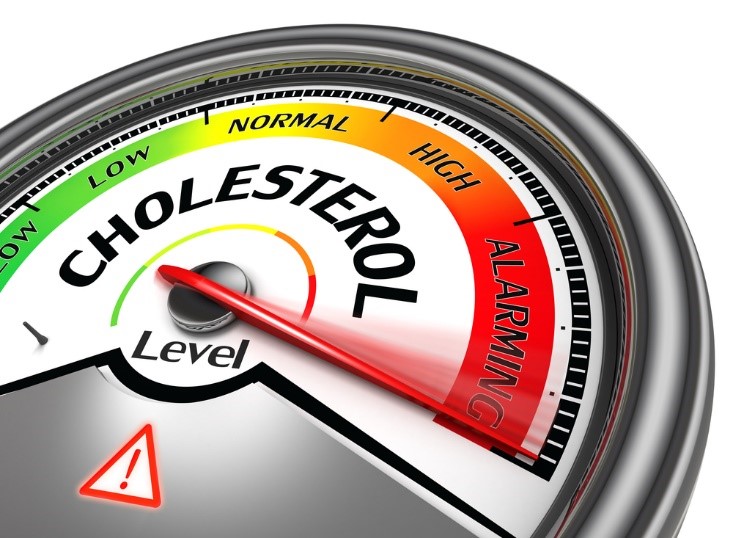What is HDL Cholesterol and LDL Cholesterol?

Cholesterol is a crucial substance for the body, serving as a fundamental component of cell membranes and playing a vital role in synthesising essential hormones. However, elevated cholesterol levels can pose significant health risks.
High cholesterol is a common health problem affecting many people worldwide. It can severely affect cardiovascular health and raise the risk of heart disease and stroke. This blog post discusses everything about HDL and LDL cholesterol and their normal ranges for healthy living.
What is cholesterol?
Cholesterol is a lipid-like substance naturally present in the body’s cells. It is produced by the liver and obtained through animal-based diets such as meat, eggs, and dairy products. There are two types of cholesterol:
HDL Cholesterol (Good Cholesterol)
HDL cholesterol is often called good cholesterol because of its beneficial role in cardiovascular health. Its primary function is to transport excessive cholesterol from the blood back to the liver to be broken down and excreted from the body. Here are the functions of HDL cholesterol:
- Protection Against Heart Disease: Higher HDL cholesterol levels cause a lowered risk of heart disease. This is because HDL helps prevent plaque buildup in the arteries, known as atherosclerosis. By removing excess cholesterol, it keeps the arteries clear and flexible.
- Anti-Inflammatory and Antioxidant Properties: HDL also exhibits anti-inflammatory and antioxidant properties, further protecting the inner lining of blood vessels from damage and inflammation.
LDL Cholesterol (Bad Cholesterol)
LDL cholesterol, also called bad cholesterol, is responsible for causing atherosclerosis. An excess of LDL in the bloodstream can accumulate on the arterial walls, forming plaques that narrow the arteries and reduce blood flow. Elevated levels of LDL are a significant risk factor for heart disease. The more LDL cholesterol in the blood, the higher the likelihood of developing atherosclerosis, which can lead to heart attacks and strokes.
However, not all LDL cholesterol is equally harmful. Smaller, denser LDL particles are more atherogenic (meaning they contribute more to artery-clogging) than larger, more buoyant LDL particles. However, standard cholesterol tests typically do not distinguish between these types. Lifestyle changes, like following a heart-healthy diet, eating less saturated and trans fats, exercising regularly, quitting smoking, and taking medications (if necessary), can help lower LDL cholesterol levels.
Causes of high cholesterol levels
Here are some causes of high cholesterol:
- Unhealthy diet
- Physical inactivity
- Excess weight or obesity
- Genetics and family history of high cholesterol.
- Medical conditions like diabetes, hypothyroidism, and kidney disease.
- Smoking and excessive alcohol consumption.
HDL and LDL cholesterol normal values
A lipid profile blood test is conducted to check cholesterol levels. The lipid profile provides information about cholesterol and triglyceride levels. Below is the HDL and LDL cholesterol normal ranges:
| Age | Total Cholesterol | Non-HDL Cholesterol | HDL Cholesterol Normal Range | LDL Cholesterol Normal Range |
| Under 19 | Under 170 | Under 120 | Under 110 | Above 45 |
| Males above 20 | 125-200 | Under 130 | Under 100 | 40 or above |
| Females above 20 | 125-200 | Under 130 | Under 100 | 50 or above |
Here is everything to know about the lipid panel test:
- Total Cholesterol: The total cholesterol reading in the lipid panel test provides an overview of the overall amount of cholesterol present in the bloodstream. This value is calculated as the sum of HDL, LDL, and 20% of the triglyceride levels.
- HDL Level (High-Density Lipoprotein): HDL, or good cholesterol, plays a vital role in lipid profile. It acts as a transport system, transporting excessive cholesterol from the bloodstream to the liver, where it is effectively removed.
- LDL Level (Low-Density Lipoprotein): While necessary for transporting cholesterol to the cells, LDL cholesterol can pose health risks when excessive. Maintaining a healthy balance of LDL is crucial for overall well-being.
- VLDL Level (Very Low-Density Lipoprotein): VLDL, a form of bad cholesterol, also contributes to plaque formation in the arteries. It primarily carries triglycerides in the bloodstream, which can impact cardiovascular health.
- Triglycerides: Triglycerides are a kind of fat in the blood that serves essential functions in the body. However, elevated levels, a condition known as hypertriglyceridemia, can increase the susceptibility to diseases like atherosclerosis.
- Non-HDL Cholesterol: Non-HDL cholesterol includes all the cholesterol in the blood that isn’t HDL. It can be easily calculated by subtracting the HDL cholesterol level from the total cholesterol value. This metric provides valuable insights into cholesterol profile.
- Ratio Between Total Cholesterol and HDL: The ratio between total and HDL cholesterol offers additional insights into the lipid profile. Typically, a ratio below five is desirable, although specific results may come with a detailed chart providing tailored recommendations based on the individual’s health profile.
Effectively regulating a healthy HDL and LDL cholesterol ratio is essential for overall well-being. Balancing HDL and LDL cholesterol is crucial in maintaining optimal cardiovascular health. While HDL helps protect against heart disease, keeping LDL levels in check is equally important to reduce the risk of atherosclerosis and related conditions. Regular medical check-ups and lifestyle changes can help manage cholesterol levels effectively and reduce the risk of heart-related diseases.
It is necessary to keep monitoring cholesterol levels regularly. In case of the prevalence of any symptoms, it is recommended to take a lipid profile test immediately in consultation with a doctor.













